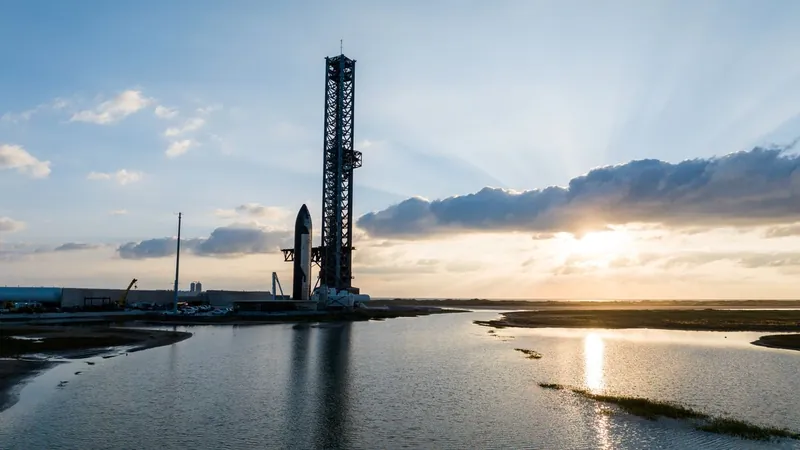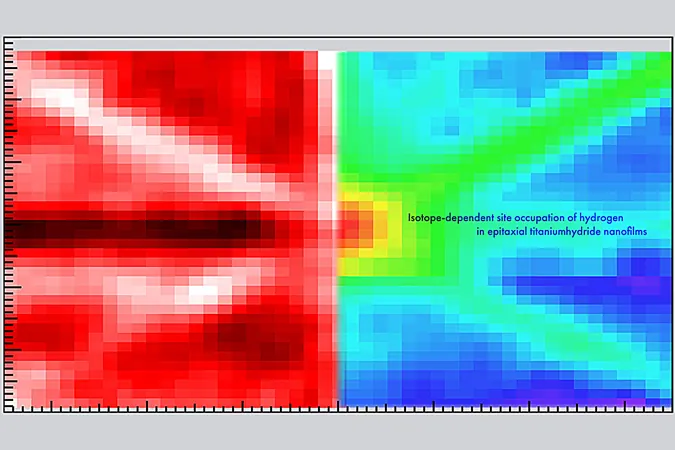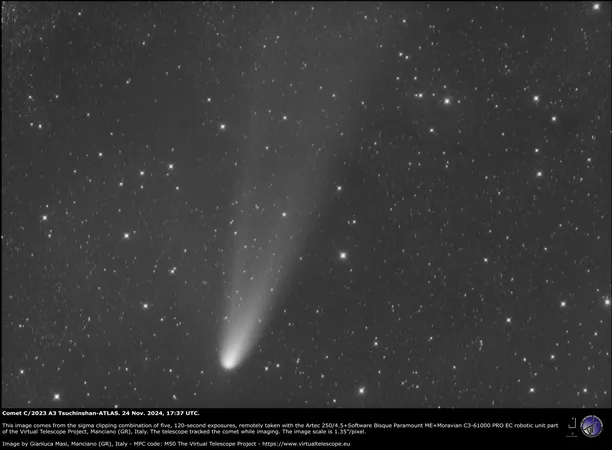
Unveiled: How Green Spaces Can Transform Urban Heat into Cool Havens
2024-11-26
Author: Amelia
Introduction
Cities across the globe are sweltering under an escalating climate crisis, and the absence of green spaces may be the unnoticed villain contributing to soaring temperatures. A stunning new study published in *Nature Communications* has utilized NASA satellite data to reveal a critical disparity in climate adaptability between cities of the Global South and Global North.
Urban Heat Island Effect
Urban areas often experience what is known as the urban heat island effect, where heat-retaining surfaces like asphalt and concrete elevate temperatures beyond those in nearby rural environments. This phenomenon can lead to dire health risks for city dwellers, including dehydration, heat exhaustion, and even fatalities. In contrast, green spaces provide a cooling remedy through shade and the release of moisture.
Research Findings
Christian Braneon, a climate scientist at NASA's Goddard Institute for Space Studies, emphasized the potential for strategic urban green space development, saying, 'Cities can strategically prioritize the creation of new green spaces where they’re needed most.' The study, led by doctoral student Yuxiang Li from Nanjing University, examined the 500 largest cities worldwide, utilizing the capabilities of the Landsat 8 satellite to analyze their cooling properties.
Cooling Capacity Disparity
The researchers found that cities in the Global South possess only 70% of the cooling capacity found in their Global North counterparts. On average, the green spaces in these cities lower temperatures by approximately 4.5°F (2.5°C), while those in the Global North manage a slightly superior cooling of 6.5°F (3.6°C). Alarmingly, many cities in the Global South are located closer to the equator, where rising temperatures and heat extremes are becoming increasingly prevalent.
Vulnerabilities in the Global South
Chi Xu, a co-author and ecology professor at Nanjing University, warned that as heat waves and rising temperatures become more common, the populations in the Global South are at a greater disadvantage. With limited access to air conditioning and frequent power outages, these communities face a mounting crisis.
Social Inequities in Urban Planning
The study highlights a troubling trend: wealthier communities boast more abundant green spaces while poorer areas languish in heat. This 'luxury effect' underscores the social inequities entrenched in urban planning. Although the study identifies Mogadishu, Somalia as the city with the poorest cooling performance, contrasted with Charlotte, North Carolina, which boasts the best, the gap is daunting yet illuminates opportunities for improvement.
Learning from Regional Examples
The researchers determined that cities within the same region can learn from one another. By using the most effective local city as a benchmark, planners can identify enhancements needed to boost cooling capacity. Potential solutions could increase average cooling capacity as high as 18°F (10°C) simply by expanding and enhancing green spaces.
Innovative Solutions
Braneon is enthusiastic about the possibilities, arguing that urban environments can't rely solely on trees or parks. Innovative solutions like creating water features, installing green roofs, or lightening surfaces can contribute significantly to urban cooling.
Conclusion
As the findings of this study ripple through the realms of urban planning and climate action, it becomes clear that integrating more green spaces into our cities is not just beneficial: it could be lifesaving. The evidence is undeniable—if cities want to fend off the heat and create sustainable living environments, they must act decisively to cultivate more greenery. Don’t let your city become the next heat trap; advocate for a greener, cooler tomorrow!









 Brasil (PT)
Brasil (PT)
 Canada (EN)
Canada (EN)
 Chile (ES)
Chile (ES)
 España (ES)
España (ES)
 France (FR)
France (FR)
 Hong Kong (EN)
Hong Kong (EN)
 Italia (IT)
Italia (IT)
 日本 (JA)
日本 (JA)
 Magyarország (HU)
Magyarország (HU)
 Norge (NO)
Norge (NO)
 Polska (PL)
Polska (PL)
 Schweiz (DE)
Schweiz (DE)
 Singapore (EN)
Singapore (EN)
 Sverige (SV)
Sverige (SV)
 Suomi (FI)
Suomi (FI)
 Türkiye (TR)
Türkiye (TR)